Summary
Bournemouth University has a small amount of HEIF (Higher Education Innovation Fund) funding available to facilitate and enhance research and development collaboration with external partners.
Dr Diogo Montalvão, Professor Phil Sewell and Ms Abi Batley have been awarded £2,710 HEIF funding in July 2021 with the aim to pump-prime research through getting the engagement and commitment from industry in a future research grant application we intend to submit to the EPSRC under the Manufacturing the Future Scheme. The proposal intends to develop UK capability in Multiaxial Ultrasonic Fatigue Testing (UFT) to get predictability of advanced material properties, namely metal AM (additive manufacturing) materials.
This HEIF funding has been pivotal on the demonstration of our advanced manufacturing and testing capability.
Our Mission
Having as primary SIA Sustainability, Low Carbon Technology & Materials Science, our mission is to contribute to reducing global waste by extending the life and enhancing the optimisation of any engineered systems through incorporating novel advanced materials tested under ultrasonic fatigue for quick and reliable predictability of properties to extend their lives. Therefore, the project addresses the UN sustainability goals of Industry, Innovation and Infrastructure; Responsible Production and Consumption; and, Climate Action.
Background
The Design & Engineering Innovation Centre has acquired a Metal Additive Manufacturing 3D printer (figure 1) that is capable of printing steel, aluminium, cobalt, nickel and titanium based alloys. The machine was commissioned in July 2021 and this HEIF funding is promoting the very first case study where metal 3D printed parts are produced with a purpose.
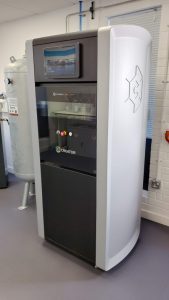
Figure 1. Orlas Creator Metal Additive Manufacturing machine in the Design & Engineering Innovation Centre.
Ultrasonic Fatigue Testing (UFT) in a nutshell
Little is known about the lifetime properties of novel advanced materials, such as metal 3D printed ones. Knowing that approximately 90% of all metallic failures are due to cyclic loadings (a layman’s example would be what happens with a paper clip when we bend it many times – it will eventually snap), we are leading global research into the application of ultrasonics for fatigue testing of advanced materials. This is the only method to quickly determine the predictability of material properties that will be subjected to cyclic loading: Ultrasonic fatigue testing (UFT) enable tests to be extended to 1 billion cycles in just a few days compared to months or years (figure 2). This allows engineering products with confidence to last for extended lifetimes, which was not so easy in the past.
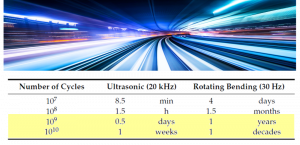
Figure 2. Comparison between the duration different fatigue testing methods need to be completed, assuming tests can run uninterruptedly.
One example of specimens that have been used to determine material properties are specimens that are cruciform, as they account for loads in two different directions to better replicate real working conditions in the lab. The PI, Dr Diogo Montalvão, has been leading research in adapting these specimens to ultrasonic fatigue testing (figure 3) and, under this HEIF, has redesigned them to be produced, for the very first time ever, by additive manufacturing (i.e., on a 3D printer) rather than by subtractive manufacturing (i.e., from machining in a CNC mill)..
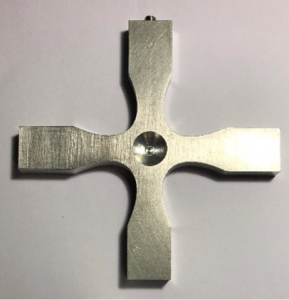
Figure 3. Ultrasonic fatigue testing equibiaxial cruciform specimens (i.e., enable testing two equal loads in two perpendicular directions).
Results
It took about 18 hours to 3D print the specimen represented in figure 3 on the right in the Orlas Creator printer in the Design and Engineering Innovation Centre. Material used was a stainless-steel alloy. According to Mr Richard Glithro (CAD Demonstrator) and Ms Abigail Batley (Additive and Virtual Manufacturing Technician), this very first specimen did push the envelope during the manufacturing process as it was designed to fit the maximum available space in the machine chamber (the specimen occupies the area of a circle with 100 mm diameter).
Video 1. 3D printing in progress in the Design and Engineering Innovation Centre: .
One interesting result, which corroborates the hypothesis that metal additive manufacturing is more eco-friendly with up to 4 times lower scrap material generated in parts manufactured, is that the buy-to-fly ratio was 1.25:1 only for the part in figure 3 on the right, with the produced part produced weighing 191 gf (a little bit under the 223.8 gf initially predicted due to some defects discussed below), whereas the scrap material was measured to weigh 47.4 gf. When the machined part represented in figure 3 on the left was produced (from subtractive manufacturing), the buy-to-fly ratio was determined to be 3.85:1, producing 3.1 times as much waste (in proportion) when compared to the metal additive manufactured counterpart.
Challenges and Future steps
There were a few problems with the printing with large defects appearing in one of the arms. While it is not yet known what the issue(s) is(are), Mr Richard Glithro and Ms Abigail Batley are determined to get a “perfect” part and are investigating what parameters need to be changed in the printing (or design) process. A new part is being sent to manufacturing and, once the intended design specification is achieved, specimens are meant to be tested in Ultrasonic Fatigue Testing. That will be done within the ADDISONIC research project that has been funded this Summer by the University under the Strategic Investment Areas game changing call.
The ADDISONIC is a project that counts with the International collaboration from the University of Lisbon in Portugal. Betta Della Giustina and Ryan Mappledoram are two BEng (Hons) Mechanical Engineering students who are driven by research and who have embraced projects in this exciting field as their final year projects. We expect that their contributions will bring valuable insights into the project’s future.
As an external outreach goal, which was part of HEIF’s initial objectives, it is expected that the outcomes from this work will attract local as well as Nationwide businesses who are concerned with the life of their products.











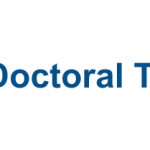 ESRC SWDTP – Applications open for PhD Studentships for September 2026
ESRC SWDTP – Applications open for PhD Studentships for September 2026 New paper by CMWH PhD student
New paper by CMWH PhD student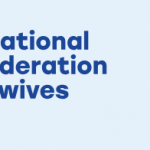 Further CMWH contributions to 2026 ICM congress
Further CMWH contributions to 2026 ICM congress ECR Funding Open Call: Research Culture & Community Grant – Apply Now
ECR Funding Open Call: Research Culture & Community Grant – Apply Now MSCA Postdoctoral Fellowships 2025 Call
MSCA Postdoctoral Fellowships 2025 Call ERC Advanced Grant 2025 Webinar
ERC Advanced Grant 2025 Webinar Horizon Europe Work Programme 2025 Published
Horizon Europe Work Programme 2025 Published Horizon Europe 2025 Work Programme pre-Published
Horizon Europe 2025 Work Programme pre-Published Update on UKRO services
Update on UKRO services European research project exploring use of ‘virtual twins’ to better manage metabolic associated fatty liver disease
European research project exploring use of ‘virtual twins’ to better manage metabolic associated fatty liver disease